Recently, MindFire hosted a webinar “2022: QR Codes Are Changing the Way We Do Business.” Presented by Joe Manos, EVP Client Success, and co-presented with David Garner, president/owner of Boyd’s Direct, the webinar presented a variety of use cases showing how QR codes can be used to provide real value to print customers.
With QR codes having been the butt of jokes for years in this industry, why are they being taken seriously now? The reason, Manos says, is changes brought by COVID. QR codes became widely accepted as part of contactless business communications, and now they have simply become part of the landscape. “Since COVID, we have seen a big increase in use cases,” says Manos. “Plus, the QR code readers actually work now—unlike the apps of the past.”
This observation isn’t just anecdotal. Based on analysis of the campaigns sent through its platform, MindFire has seen this shift first-hand. For example, it has found that when a campaign uses a personalized QR code to send someone to video, that campaign sees a 3x–5x lift beyond just the direct mail piece alone.
Top applications for QR codes, according to MindFire?
- Contactless payments
- Menu/ordering food
- Registrations
- Donations
- Medical uses
In the webinar, MindFire showcased more than two dozen use cases for QR codes, many of which fall under one of these categories. These examples were chosen because the QR code wasn’t just thrown on there for the sake of it. (“We need to add a QR code. What can we use it for?”) In all cases, the QR code was integral to achieving the marketing goal. Thus, these were great examples, not just of how to incorporate print-to-mobile tools, but how to add value to the client relationship. This same thought process applies to other marketing tools as well, including augmented reality.
Here are just a few use cases. You can watch the full MindFire webinar to see the rest of them.
1. Registrations
Knowing that pets do not like to go to the vet, Better Vet is a mobile vet clinic that brings the vet to the home. To promote its business, Better Vet sent a postcard offering recipients free video consults for 30 days after sign-up. To make signing up as easy as possible, Better Vet included a QR code that takes recipients right to the app in the App Store. This is a perfect use of QR codes: make a compelling offer, then remove any barriers to taking advantage of it.
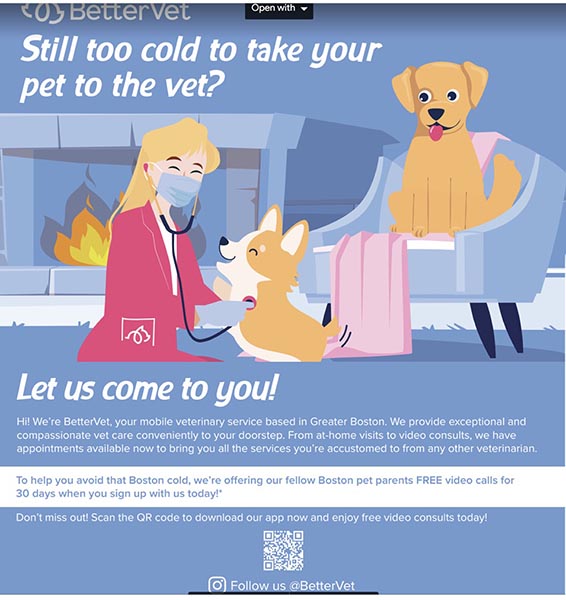
Munchin Samu uses a similar approach, but it does so on its website rather than in direct mail. First, it outlines the benefits of its app. Then it adds a QR code to make downloading the app fast and easy.
2. Brand Engagement
Fashion Fox knows that shoppers like to buy from brands that practice sustainability—not just talking the talk, but walking the walk. So it created freestanding displays with QR codes that invite shoppers to watch the journey of its organic cotton from farm to store.
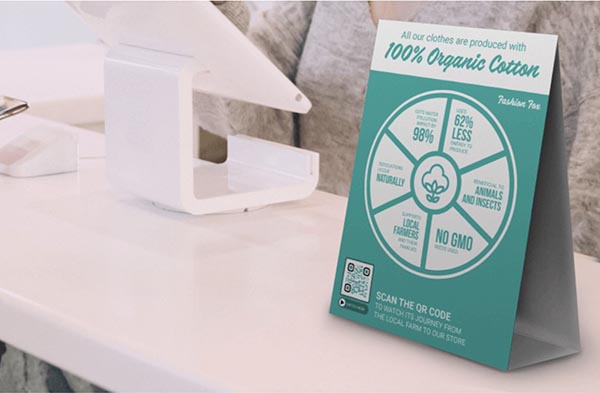
Not only does this tap the powerful consumer trend toward engaging with socially and environmentally conscious companies, but MindFire’s internal metrics show that QR codes-linked-to-video is the number one channel for its customers. “If you want the #1 marketing channel to drive results, use personalized QR codes connected to short videos relating to your product or service,” says Manos. “In these implementations, we see viewership rate of 61%, with 52% of people watching the complete video.”
3. The Rotary Club
The official Rotary Directory of the Rotary Club is an incredibly useful tool, but even in digital form, it can be big and unwieldy. Instead of expecting readers to flip through the giant directory or sending readers to the Rotary Club’s home page where they have to search around to find what they want, Rotary District 7930 used QR codes to send people directly to specific pages of interest, such as its speaker database and membership resources, right from its printed district directory. “How many customers are you supporting that are involved in membership services?” asks Manos. “This is a brilliant way to take existing materials and give them expanded readership.”
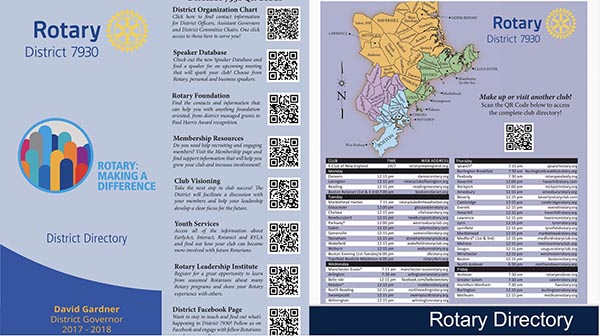
Other Use Cases
“Follow Us”: Ciao Pizza added a QR code to its window cling to allow customers to easily follow the company on social media. Just scan to follow. “How often do you do signage that could have a different life by adding QR codes leading to information of value?” asks Manos. “QR codes are just starting to have a big impact on the signage side.”
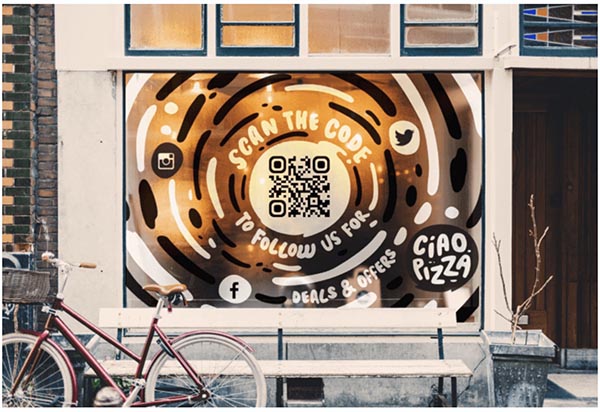
Recruitment: Looking to hire? Make it easy as possible to apply. NuPath, a network of regional agencies supporting the diverse needs of people living with disabilities, added a QR code to its recruitment EDDM postcards to simplify the process. The QR code takes applicants directly to its hiring page where they can see a list of its employment benefits, NuPath’s mission statement and starting pay, and apply. The Department of Naval Services (Northeast Region) took the same approach. It included a URL where people could apply, as well as a QR code that they could scan to go directly to the application page, as well.
“Everybody is having trouble hiring these days, so removing any barriers to application just makes sense,” says Manos.
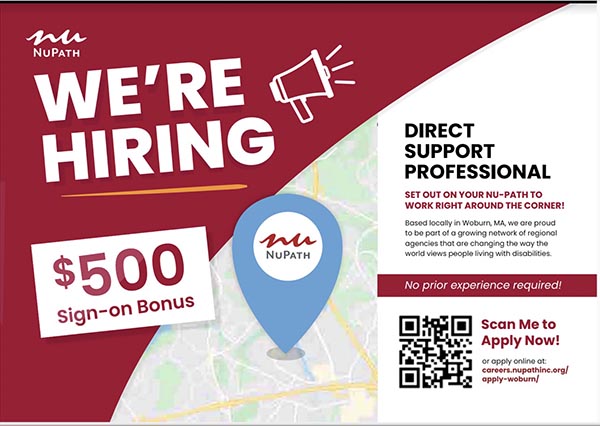
Freebies: This coffee shop uses a real attention-getter: “This could have been free!” How? By being a member of its loyalty program. It then includes a QR code to let people sign up. Now their coffee can be free…next time. In this case, the QR code served as a direct link between the call to action and the immediate benefit to the customer.
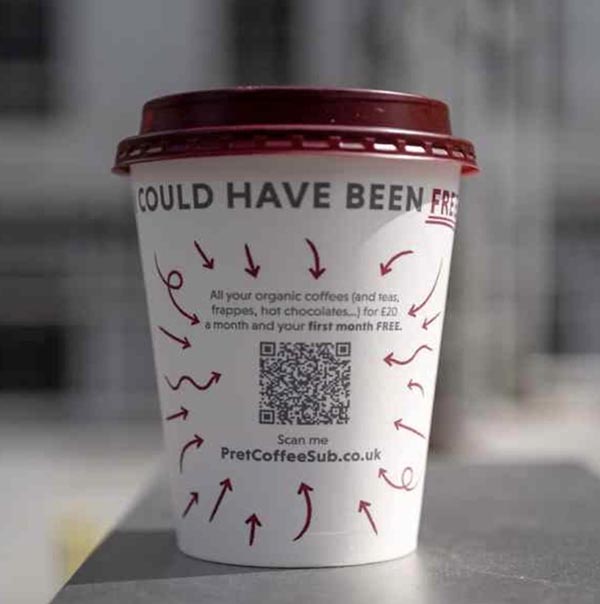
Product Use: The next use case is those little QR codes on the plastic tags on plants in the nursery at Home Depot. What makes this a great application? Before people buy a plant, they want to know that they will be able to take care of it. Product information tags solve a problem for these shoppers:
“I want to buy this plant.” —> “Will I kill it?” —> Yes/No.
Donations: Add to fundraising mailers to enable people to donate to your mission immediately. If you let the enthusiasm cool down, people will forget or not follow through. Catch them while their interest is highest.

Personalized medicine: One hospital system wanted to improve patients’ health to both improve their quality of life and reduce its outlay for medical expenses. To make it as easy as possible to get patients engaged with appropriate lifestyle improvements, the hospital added personalized QR codes to its patient newsletters that took them to a personalized exercise plan based on their individual health information.
In these and other examples, you aren’t just adding a QR code to add a QR code. There is a specific purpose. I also love that these use cases cover a full range of marketing channels—direct mail, web, TV, window clings, in-store displays, product tags, and even the products themselves. That’s because they are really about problem-solving, not QR codes, and true problem-solving isn’t restricted to certain channels only.
Success with QR codes, as Manos concluded, is about understanding the client’s “number one objective,” then connecting the dots. What is great about this is that this is a highly effective strategy that PSPs can apply to their clients’ campaigns across the board. Sometimes those campaigns will include a QR code as part of the solution. Other times, they won’t. Either way, print shops are exercising their problem-solving skills, and that benefits them—and their clients—regardless of which marketing tool(s) get used.










Discussion
By David Scott on Aug 08, 2022
I thought this one was great: Having it go to the app store to make downloading easy.
I don't know how many times I have seen "download our app", then have to search through to find the correct one.
I wonder what other ways these can make our lives easier? How about a code to help people connect to the WiFi... is that a thing?
David
Discussion
Join the discussion Sign In or Become a Member, doing so is simple and free